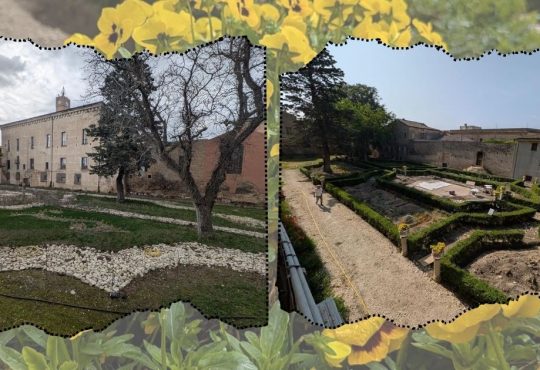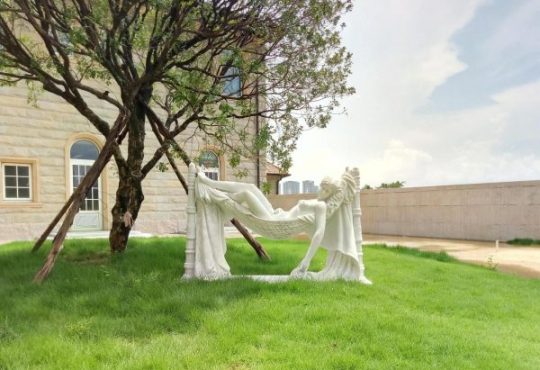In an era where boundaries between art forms are constantly blurring, Luis Rincón, a Colombian multidisciplinary artist based in Spain, is crafting a name for himself by doing just that—erasing lines and redrawing them with depth, heritage, and bold creative integrity. With a practice that weaves together photography, video, installation, drawing, and performance, Rincón’s work is deeply personal yet universally resonant, exploring themes of memory, displacement, and cultural identity.
Born in Colombia and now immersed in the European art scene, Rincón brings a powerful dual perspective to his work. His projects often reflect the tension between origin and migration, presence and absence—narratives shaped by his own lived experience. The result? A body of work that not only reflects the complexities of being a Latin American artist in Europe but also confronts broader socio-political landscapes, especially those linked to memory politics, trauma, and post-colonial history.
From Bogotá to Barcelona: A Journey Beyond Borders
Luis Rincón’s move from Colombia to Spain marked more than a change of address—it was a turning point in his artistic evolution. After studying Visual Arts at the Pontificia Universidad Javeriana in Bogotá, he continued his education at the University of Granada and later at the prestigious Master of Artistic Production and Research program at the Universitat de Barcelona.
Now based in Spain, Rincón navigates multiple cultural spheres with ease. His exhibitions span across Europe and Latin America, showing work in institutions and independent art spaces in cities such as Madrid, Mexico City, Bogotá, Berlin, and beyond. His practice is characterized by what he describes as “poetic resistance”—an approach that transforms memory and personal experience into quiet but sharp commentary on political erasure, identity shifts, and the weight of inherited trauma.
A central thread in Luis Rincón’s practice is his sustained engagement with the politics of memory, particularly as they relate to the Latin American experience. His works often integrate archival photographs, found objects, and personal belongings, creating layered compositions that investigate how memories are preserved, manipulated, or erased across generations. By situating these elements within carefully constructed visual frameworks, Rincón exposes the fragility of collective memory and the forces—political, cultural, and personal—that seek to shape or suppress it.
One of his persistent inquiries concerns the impact of colonial and post-colonial histories on contemporary identities. In performance, Rincón animates these histories through gestures, movements, and symbolic acts, making their weight palpable to the audience. His installations, while formally restrained, gain intensity through their material choices: ashes that speak of destruction, garments worn and faded by time, or intimate family photographs that bridge private memory with public history. These combinations create a charged space where past and present converge, compelling viewers to reckon with histories that are often overlooked or deliberately forgotten.
Multidisciplinary Practice, Singular Vision
While many artists devote themselves to perfecting a single medium, Luis Rincón navigates fluidly across photography, video, drawing, and ephemeral performance, treating each not as an isolated discipline but as part of a larger, interconnected practice. His exhibitions often combine these forms in carefully orchestrated sequences, creating multi-layered environments that demand both visual and emotional engagement. This synthesis enables him to address complex themes from different angles—sometimes presenting the same subject through contrasting media to reveal its shifting meanings. The result is a body of work that resists compartmentalization, instead forming a living ecosystem of ideas and experiences.
Photography in Rincón’s practice often functions as an act of preservation, documenting spaces, objects, and fragments that might otherwise be overlooked or forgotten. His images—frequently devoid of human subjects—capture the resonance of absence, the quiet persistence of memory embedded in architecture, landscapes, and relics of daily life. In the video, he employs deliberate pacing and extended shots to cultivate a meditative atmosphere, giving the viewer time to absorb subtle movements, sounds, and silences. This temporal stretching becomes a counterpoint to the urgency of his themes, allowing complex histories to unfold with dignity and depth.
Drawing serves as an intimate counterpart to these larger-scale works, operating almost as a form of visual note-taking or emotional mapping. It often appears alongside his other mediums, bridging the physical and conceptual gaps between them. Performance, however, is where Rincón’s work reaches its most visceral intensity. Using his own body as both medium and message, he confronts historical and personal narratives in real time, transforming endurance, vulnerability, and ritual into influential acts of storytelling. These performances often leave behind ephemeral traces—ashes, worn garments, or rearranged objects—that later reappear in his installations, blurring the boundaries between live action and static display.
Across all these media, Rincón maintains a consistent intention: to create spaces where reflection, remembrance, and healing can occur. His art does not simply depict memory—it actively constructs it, inviting audiences to enter into an unfolding dialogue between the visible and the invisible, the personal and the collective, the past and the present.
Recognition and Future Projects
Luis Rincón’s work has garnered significant recognition from prominent cultural institutions, museums, and residency programs across Europe and Latin America. Over the past decade, his participation in artist residencies has provided not only time and space for experimentation but also opportunities to engage in cross-cultural dialogue with fellow creatives. His practice has been supported by grants and commissions from organizations committed to advancing socially engaged art, further solidifying his position as a voice attuned to the intersections of memory, identity, and history. Exhibitions of his work have been hosted by both contemporary art spaces and historical institutions, reflecting the dual relevance of his themes in artistic innovation and cultural preservation.
This growing visibility has led to invitations for Rincón to present lectures, workshops, and panel discussions in both academic and artistic forums. His talks often address the relationship between art, historical narrative, and social justice, drawing on his projects as case studies. Universities, cultural centers, and biennials have sought his perspective on how artistic practice can function as an act of remembrance, activism, and healing. Beyond exhibition halls, Rincón has collaborated with grassroots organizations, using art as a platform to amplify marginalized voices and document overlooked histories.
As of 2025, Rincón continues to divide his time between Spain and Colombia, a geographic rhythm that reinforces the transnational scope of his work. His forthcoming projects explore three key areas: environmental grief, Latin American resistance movements, and the evolving relationship between digital and ancestral memory. The environmental grief series will address the emotional and cultural consequences of ecological loss, using materials sourced from endangered landscapes. His exploration of resistance movements will combine archival research with participatory art-making, inviting communities to contribute their narratives of struggle and resilience. Meanwhile, his digital ancestral memory project will investigate how traditional storytelling and indigenous knowledge can be preserved, transformed, and reactivated in the digital era, blending technology with ritual and symbolism.
Through all these endeavors, Luis Rincón’s commitment to his craft remains unwavering. At the heart of his practice lies a profound dedication to examining the fragility of human memory—how it can be distorted, lost, or suppressed—while simultaneously honoring the enduring resilience of cultural identity. His work does more than document the past; it engages with it actively, transforming personal and collective histories into living, breathing narratives that speak across generations. Each piece functions as a bridge, connecting intimate memories with broader societal experiences, inviting viewers to witness and participate in the ongoing dialogue between past and present.
Rincón’s art operates as a dynamic living archive—one that not only preserves but also reclaims, reinterprets, and reimagines histories often overlooked or marginalized. Through installations, performance, photography, and video, he creates immersive environments where audiences are encouraged to pause, reflect, and confront the complexities of identity, displacement, and memory. These spaces are not passive; they provoke thought, elicit emotion, and foster dialogue, cultivating moments of personal insight and communal understanding. In doing so, Rincón ensures that the stories embedded in his work continue to resonate, reverberating across time and place, and offering pathways for reflection, transformation, and cultural renewal.
Art as Reflection and Resistance
At a time when conversations around identity, decolonization, and belonging are more relevant than ever, Luis Rincón stands out as an artist who doesn’t just participate in the discourse—he expands it. His work is thoughtful, evocative, and often quietly radical, drawing from personal history to speak to collective experience.
Whether you encounter Luis Rincón’s work in a gallery in Spain, witness a performance in Colombia, or experience a digital installation online, he invites you to pause, reflect, and truly engage with the layers of meaning embedded in his art. Each piece becomes a space for contemplation, where memory, identity, and cultural heritage intersect, prompting audiences to connect personal experience with collective histories.
In guiding viewers through these moments of introspection, Rincón demonstrates that art is far more than a means of self-expression—it is a vehicle for resistance, a catalyst for dialogue, and a source of renewal. His creations challenge us to confront what is often forgotten, question prevailing narratives, and recognize the enduring power of creativity to heal, inspire, and transform.





